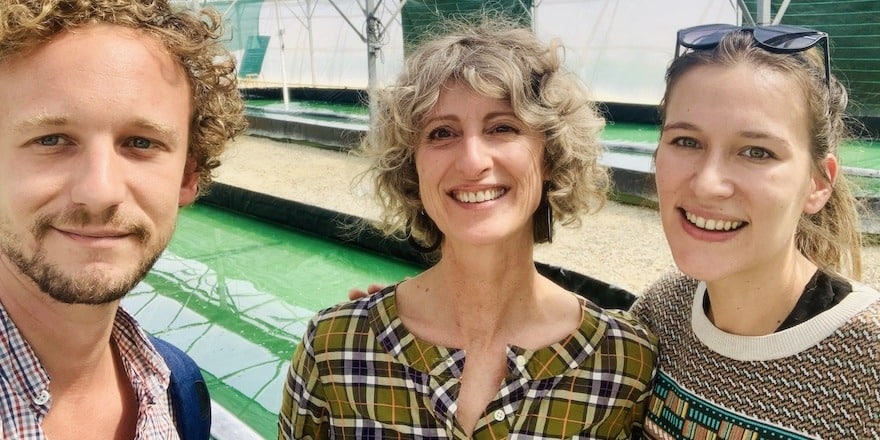A spirulina farm amid tomatoes in Lot-et-Garonne
A change of scenery after cocoa in the Amazon and raw chocolate in New York. We stop at a typical inn in the Lot-et-Garonne where we savor a duck breast and Marmande wine, and we head to Montpouillan, an agricultural village of at most 700 inhabitants.
We called Laurence at the last minute, the day before for the next day. She welcomes us to the family farm with a smile from ear to ear, good coffee, and a few squares of spirulina chocolate. She grew up here while her parents, market gardeners, grew tomatoes. She created her own farm, Spiruline des Frangines, in 2013 (see her shop, to buy spirulina online).
She tells us her story…

From nomadic adventurer to committed spirulina farmer
After traveling the world for 20 years, from the United States to India, forging a life of experiences and encounters, she decides to return to her native homeland. And to do something with her father’s greenhouses that are no longer used.
Laurence first tried spirulina in the early 2000s, after beating a brain tumor – we were taken with her strong-willed character, and we’re now truly impressed. The super-alga had then helped her get back on her feet and detoxify her body after the heavy treatments she had undergone.
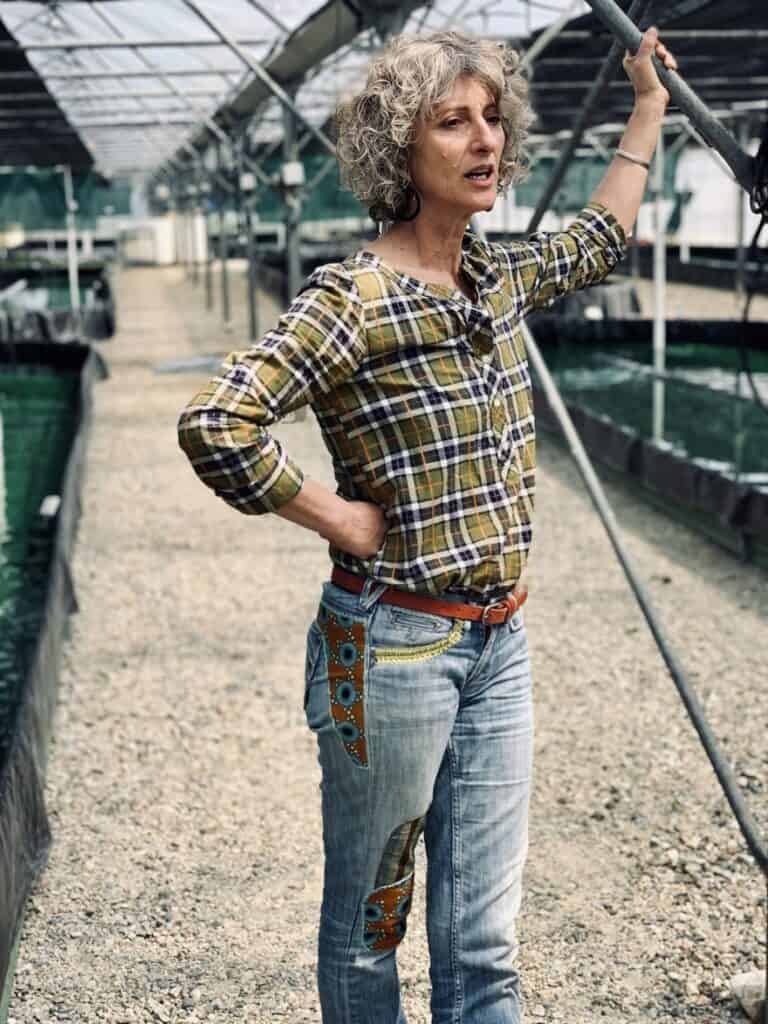
One morning, years later, while opening the doors of a climbing gym where she works in Montpellier, Laurence comes face to face with a spirulina producer at an artisan market. There, she decides to learn everything about spirulina and its cultivation, and cycles daily to that spirulina farmer who opens his farm and shares his knowledge with her.
In 2013, Laurence set up her first spirulina ponds on the family farm in Montpouillan. Besides the already existing greenhouses, she has a valuable resource: water. It is drawn directly from a natural spring belonging to the farm.
Why is Laurence a committed spirulina farmer? First, because spirulina cultivation has a low environmental impact – it produces a protein- and iron-rich food using little space, little water, and little energy, unlike, for example, cattle farming.
Also because she chose to grow her spirulina in salt from Salies-de-Béarn, a pure salt naturally found in the neighboring Pyrenees.
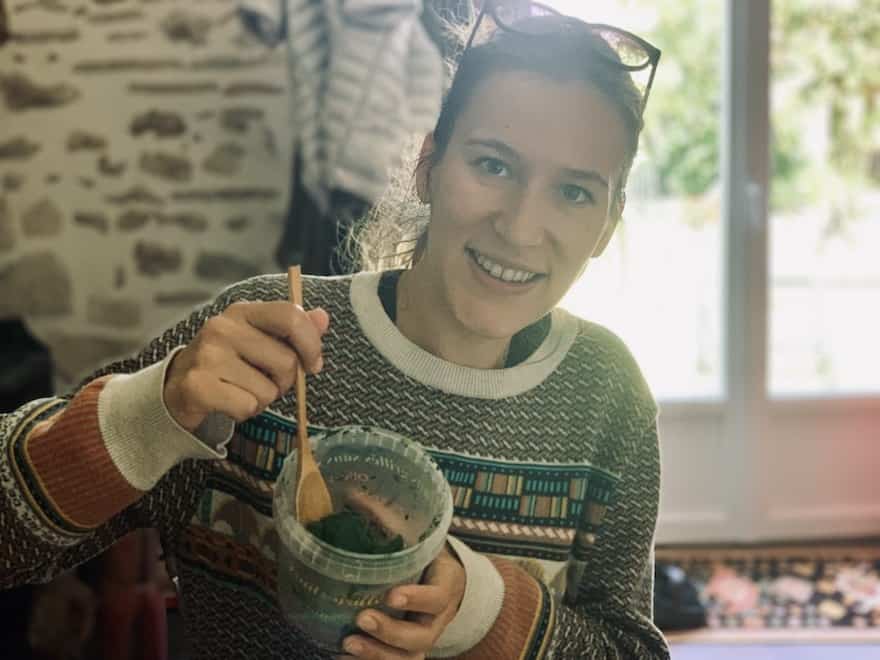
Finally, her spirulina is cold-dried below 40°C, so it remains raw (alive!) and retains all its beneficial nutrients.
What is spirulina again?
Spirulina is simply one of the most exceptional foods there is. This cyanobacterium, which is often referred to as an algae, is one of the earliest forms of life on Earth since it is about 3.5 billion years old.
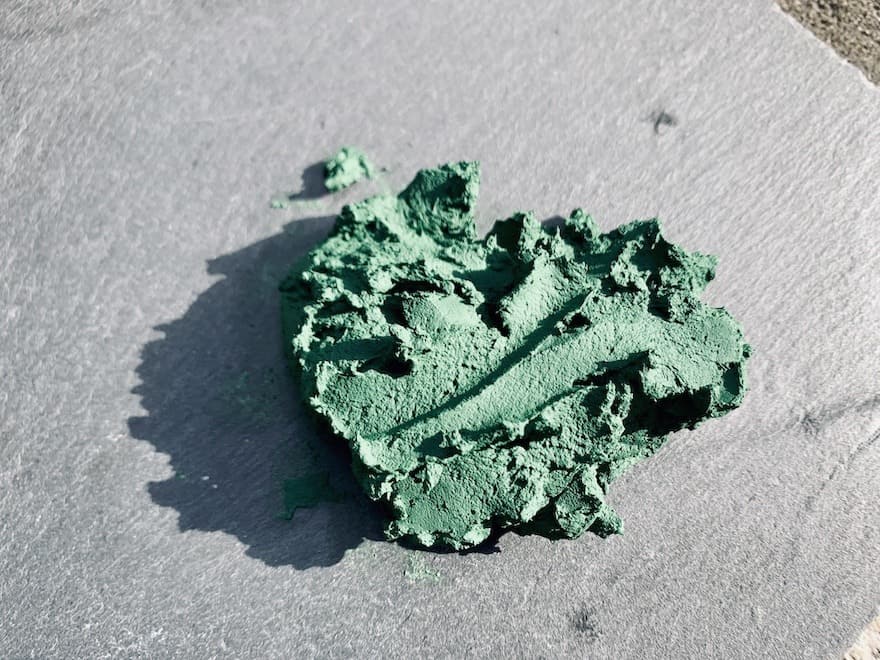
It grows wild in the alkaline lakes of warm regions in the Americas, Africa, and Asia. For example, it was consumed by the Aztecs at Lake Texcoco, and still today at Lake Chad by the Kanembu people.
Spirulina is a unique source of proteins, vitamins, iron and other minerals. It may be the most powerful of what are called superfoods, and on top of that its cultivation is environmentally friendly.
Today it is used in humanitarian programs to fight malnutrition. But not only that, since NASA also uses it on space missions, and plans to cultivate it on Mars. As for us, we can easily obtain it (in powder, flakes, and tablets) directly from producers like Laurence, or in health food stores.
From cultivation to our plate, how is spirulina produced?
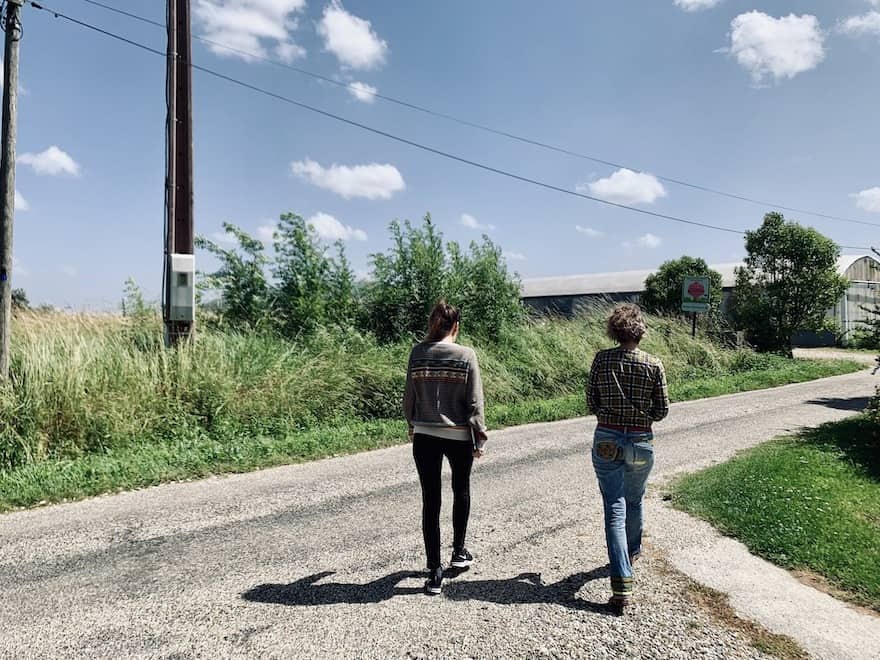
It’s June, one of the busiest months for harvesting! The harvest takes place from April to October, when sunlight allows spirulina to carry out optimal photosynthesis.
We leave the cozy atmosphere of Laurence’s living room to head to the greenhouses. Nine tanks follow one another, and we’re immediately entranced by the marbled green water flowing before our eyes. Laurence started with a strain taken from a colleague, which she fed with iron and other minerals, NPK fertilizer (nitrogen, phosphorus, potassium)… The sun did the rest!
“L’eau de notre source, c’est ma plus grande richesse. Pour cultiver la spiruline on a pas besoin de beaucoup d’eau, mais d’une bonne eau.”
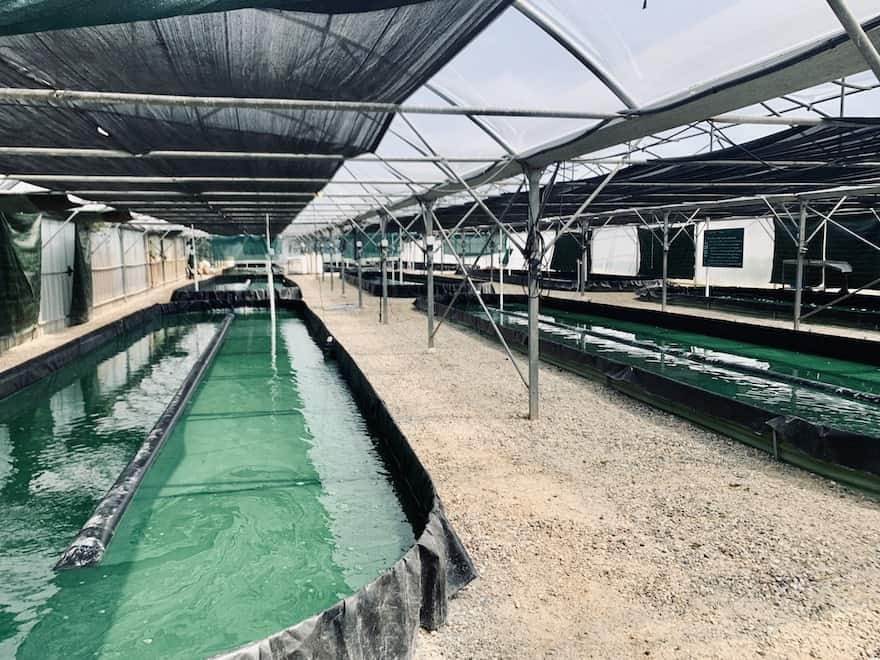
Laurence harvests the spirulina in the morning. She works alone, sometimes with a seasonal helper. The greenhouses provide a warm environment conducive to the proper regeneration of the cyanobacteria.
A universe in a drop of water! That’s what’s happening in the spirulina tank: the cyanobacteria drift, reproduce… Their spiral shape gave the superfood its name 🙂

So how does it work in practice? We measure the density of the tanks with a Secchi disk. The densest tanks are ready to be cultivated; we leave the others alone while the spirulina regenerates as it should.

In the adjacent laboratory, we open the tap corresponding to the selected tank. A very fine mesh filters the liquid, forming a green cream on its surface. You have to use a bit of imagination for what comes next because, since it’s afternoon, the harvest has already taken place 🙂

We place the biomass in a box to press it. Of course Laurence wears gloves; everything is done by hand and according to regulations!
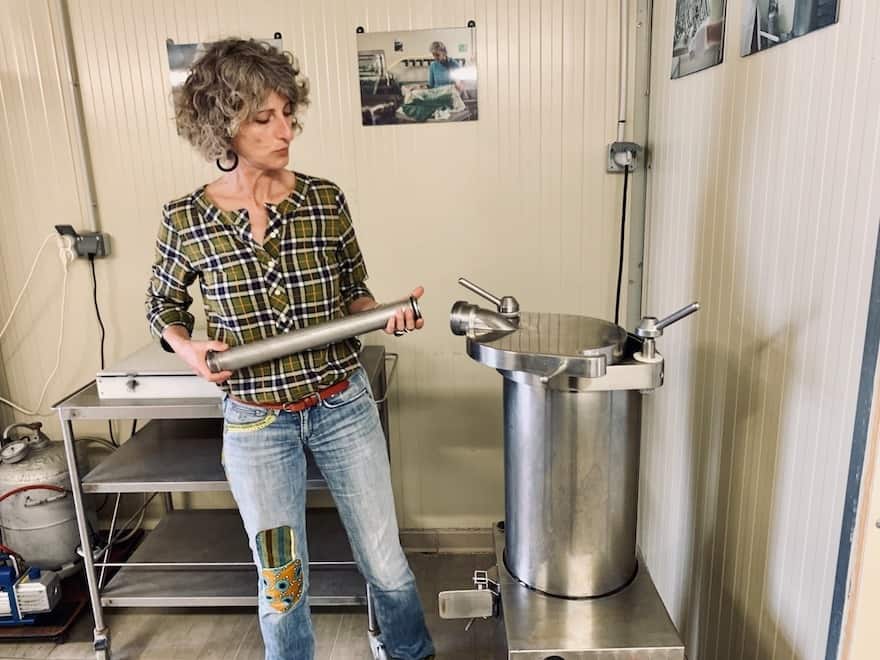
Then we put the resulting dough into this odd machine, an old sausage stuffer repurposed as a spirulina spaghetti machine! We then turn the dough into long strands.
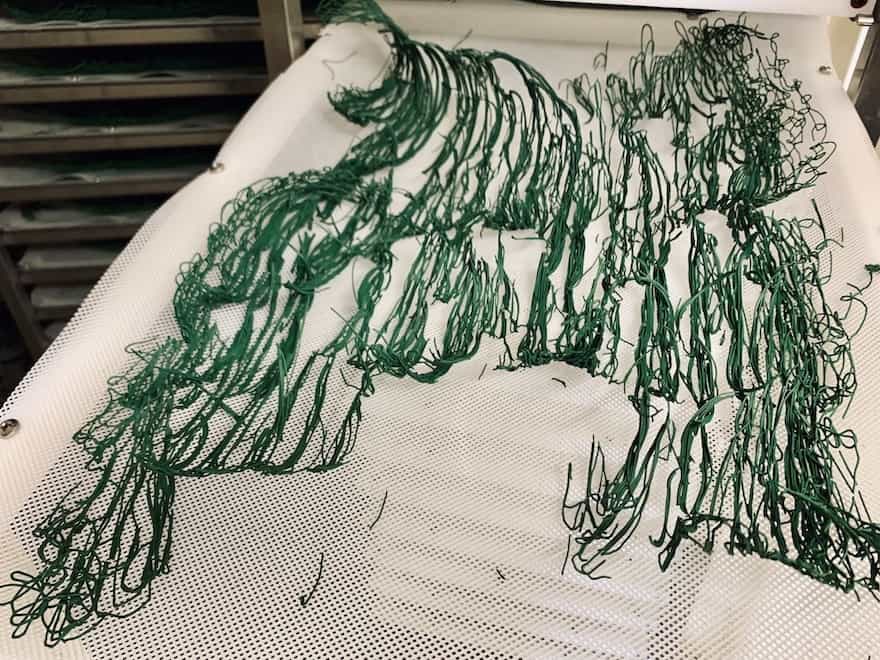
The spaghetti then spend the whole day on a tray in a dryer. The temperature never exceeds 40°C: this is called cold drying. The nutrients and qualities of the spirulina are preserved! It remains alive!!!
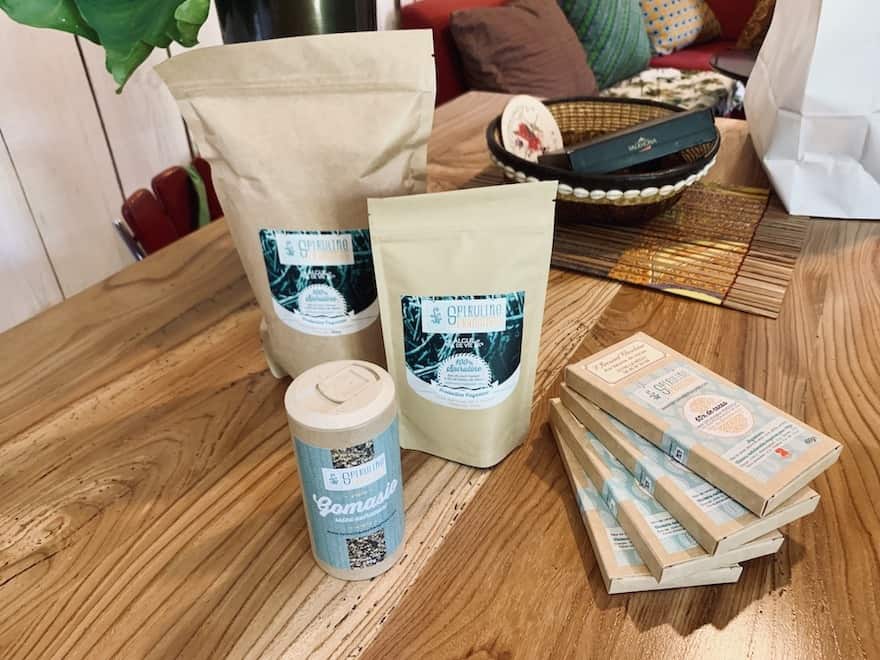
Laurence then grinds her spirulina by hand to form flakes, sends a sample to the lab for bacteriological analysis, and packages it in pouches. She also loves developing new products: spirulina chocolate (in collaboration with a local master chocolatier), spirulina gomasio…

“La spiruline, c’est dans la journée que ça se passe !”
That’s a day in the life of spirulina. As for Laurence, she also handles admin, accounting, communications, selling at markets, and managing online orders (30% of her sales)… She also shares her know-how with young people who want to start in the spirulina adventure, and regularly travels to Africa to develop collaborations.
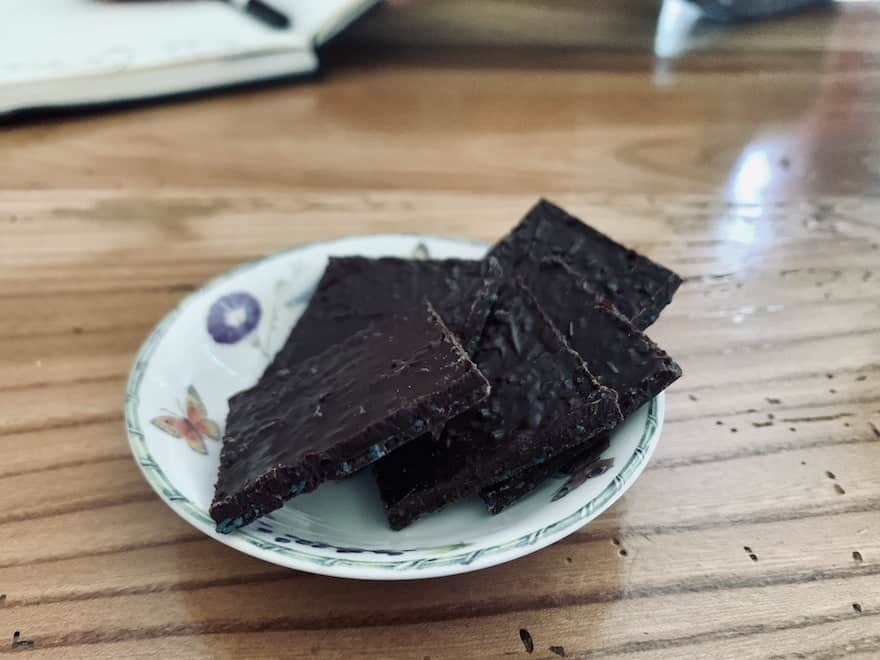
French spirulina farmers are usually people changing careers who are committed to cultivating a healthy, eco-friendly product. Their operations are artisanal and their approach sustainable; they are often organized as farms with a short supply chain selling directly to consumers.
To understand why French spirulina is not (yet) organic, read our article. French spirulina farmers, grouped within a federation of more than 150 producers, are considering developing their own label, “spiruline paysanne française”, with an ecological set of requirements.
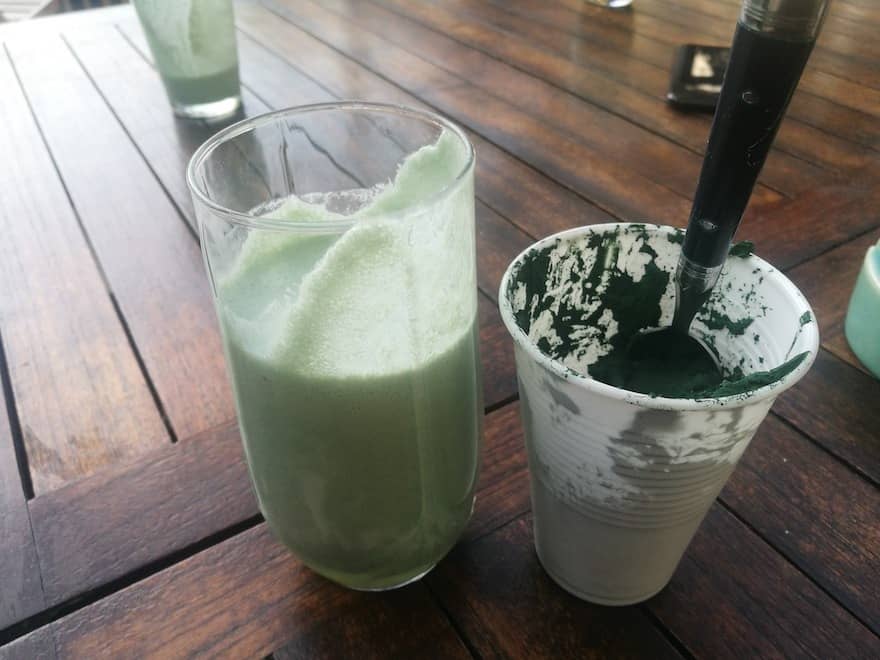
A pleasure to see in person how it all works, and a lovely encounter to boot: we can’t wait to continue exploring the world of superfoods! And to try our own recipes… With the fresh spirulina kindly offered by Laurence, we make a delicious Piña Colada for the aperitif 😉


